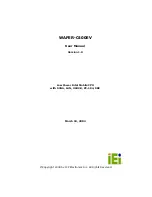
the displayed address.
© RTN (return)/BIGIN Key
RTN : Due to the address r o t a t i o n f u n c t i o n , the u n i t r e t u r n s to the
begin address.
BI GIN : When the 2nd F key ® i s pressed and second function mode activated,
the begin address can be set by pressing t h i s key.
© RCL (recalI)/END Key
RCL : I f t h i s key i s pressed during normal mode, the data stored i n the
memory of the currently displayed address i s output.
END : When the 2nd F key ® i s pressed and second function mode activated,
the end address can be set when this key i s pressed.
® Address Sett ing Keys
Use t h e k e y s to i n c r e a s e or d e c r e a s e t h e a d d r e s s i n 1 or 1 0 - s t e p
increments or decrements. Use the keys on the l e f t f o r IG-step changes
and use those on the right for 1-step increase or decrease. The address can
be set in 100 steps from 0 — 9 9 .
® EXT MODULATION AF/L Input Terminal
Input terminal for e x t e r n a l modulation s i g n a l for AM, FM s i g n a l s . In the
case of s t e r e o modulat ion, the l e f t s i d e s i g n a l i s input here. Input
l e v e l i s 3 Vp-p, input impedance l O k f i , maximum imput voltage i s 10V (DC+
AC peak).
© EXT MODULATION R Input Terminal
In the case of s t e r e o modulat ion, the r i g h t side s i g n a l i s input here.
Input l e v e l i s 3 Vp-p, input impedance lOkQ, maximum input voltage i s 10V
(DC + ACpeak).
@ EXT HIGH/LOW Indicators
The HIGH and LOW indicators indicate whether the input level of the external
modulat ion s i g n a l i s too high or too low. The v a l u e d i s p l a y e d at the
modulat ion d i s p l a y when both HIGH and LOW a r e turned o f f , becomes the
modulation value.
10










































